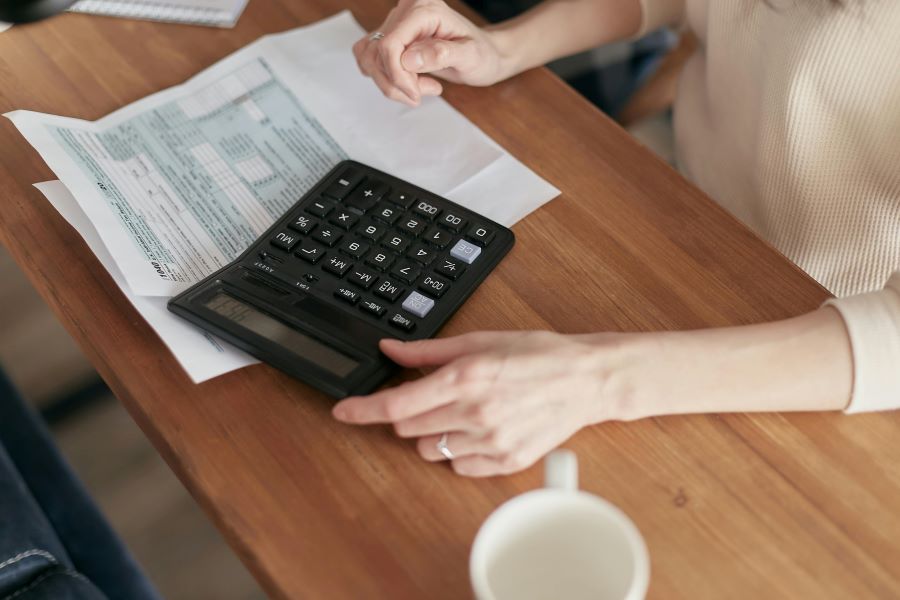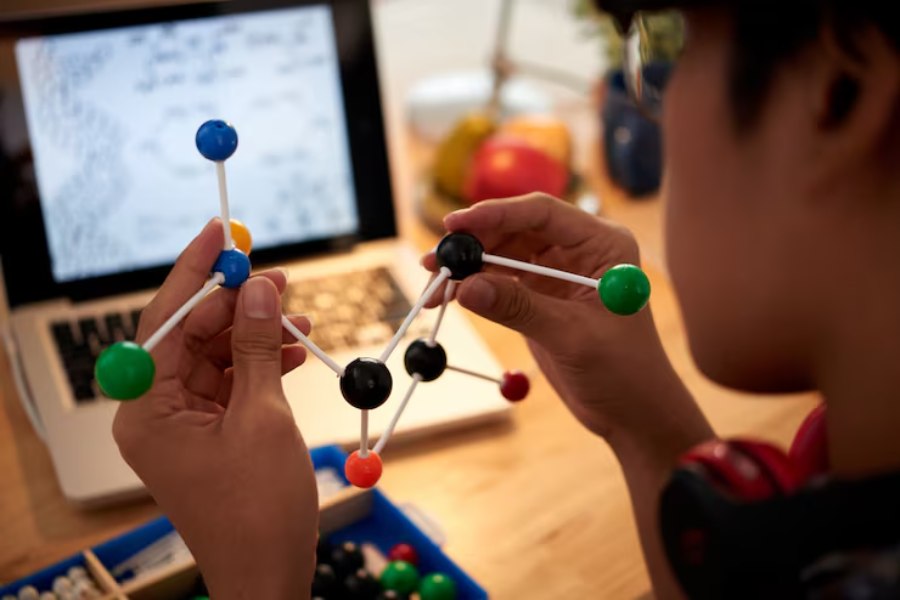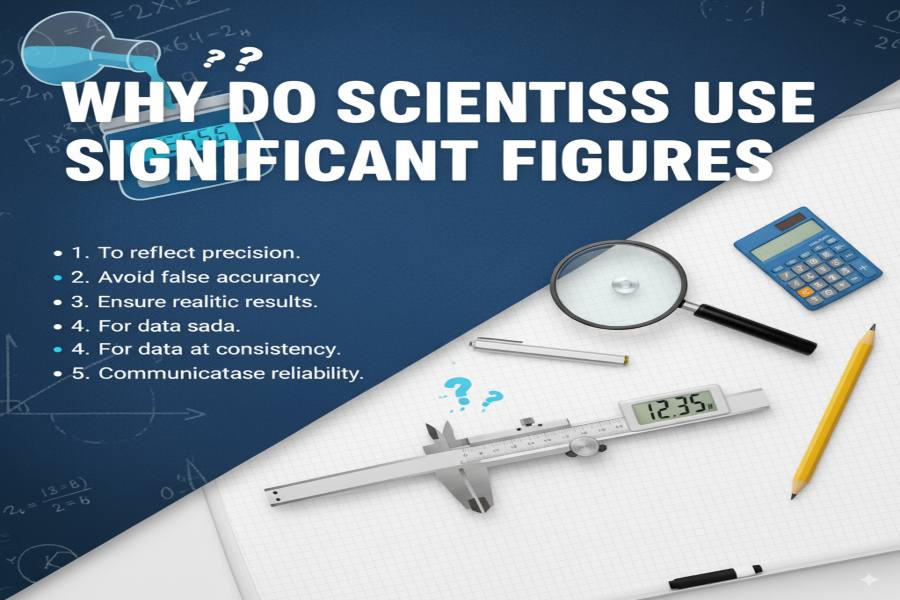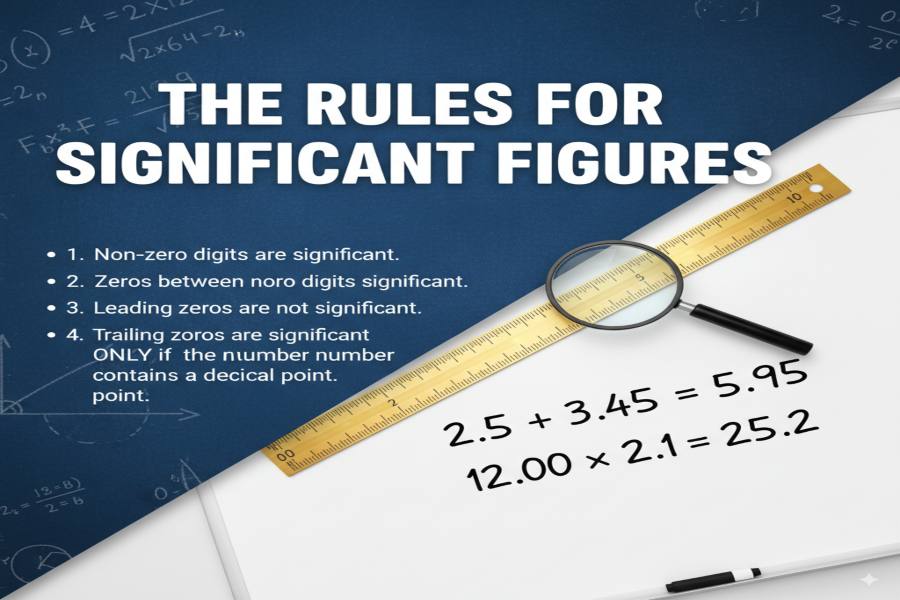
When performing calculations in science, engineering, and mathematics, significant figures (sig figs) play a crucial role in expressing the precision of your results. However, the rules for handling significant figures differ depending on whether you're adding, subtracting, multiplying, or dividing. This article focuses specifically on the rules for addition and subtraction.
Understanding when and how to apply significant figure rules in addition is essential for accurate scientific calculations. We'll explore the fundamental principles, walk through examples, and provide interactive tools to help you master this important concept.
Contents
Understanding Significant Figures
Significant figures are the digits in a measurement that carry meaning and contribute to its precision. Before diving into addition rules, let's quickly review what makes a digit significant:
1
Non-zero digits are always significant
1234 has 4 significant figures
2
Zeros between non-zero digits are always significant
1002 has 4 significant figures
3
Leading zeros are never significant
0.00123 has 3 significant figures
4
Trailing zeros in a number with a decimal point are significant
12.300 has 5 significant figures
Visualizing Significant Figures
12.340
The Rule for Addition and Subtraction
The Key Rule
When adding or subtracting numbers, the result should have the same number of decimal places as the measurement with the fewest decimal places.
Why This Rule?
This rule differs from multiplication and division because addition and subtraction combine measurements directly, rather than creating ratios or products. The precision of the result is limited by the least precise measurement.
Think of it this way: if one measurement is only precise to the tenths place (e.g., 10.1 cm), then adding a more precise measurement (e.g., 5.237 cm) cannot make the result more precise than the tenths place.
Illustrated Example
1
Identify the number of decimal places in each measurement
10.1 cm → 1 decimal place
5.237 cm → 3 decimal places
2
Perform the addition
10.1 + 5.237 = 15.337
3
Round to the number of decimal places in the least precise measurement
15.337 → 15.3 (rounded to 1 decimal place)
Examples of Addition with Sig Figs
Let's walk through several examples to solidify your understanding of how to apply the significant figures rule in addition and subtraction.
Example 1: Simple Addition
Calculate: 12.3 + 5.67
Step 1: Identify decimal places
12.3 has 1 decimal place
5.67 has 2 decimal places
Step 2: Add the numbers
12.3 + 5.67 = 17.97
Step 3: Round to 1 decimal place (from 12.3)
17.97 → 18.0
Note: We write 18.0 (not just 18) to show that we have precision to the tenths place.
Example 2: Multiple Numbers
Calculate: 1.23 + 45.6 + 7.891
Step 1: Identify decimal places
1.23 has 2 decimal places
45.6 has 1 decimal place
7.891 has 3 decimal places
Step 2: Add the numbers
1.23 + 45.6 + 7.891 = 54.721
Step 3: Round to 1 decimal place (from 45.6)
54.721 → 54.7
Example 3: Subtraction
Calculate: 100.5 - 32.467
Step 1: Identify decimal places
100.5 has 1 decimal place
32.467 has 3 decimal places
Step 2: Subtract the numbers
100.5 - 32.467 = 68.033
Step 3: Round to 1 decimal place (from 100.5)
68.033 → 68.0
Example 4: Whole Numbers
Calculate: 25 + 3.42
Step 1: Identify decimal places
25 has 0 decimal places
3.42 has 2 decimal places
Step 2: Add the numbers
25 + 3.42 = 28.42
Step 3: Round to 0 decimal places (from 25)
28.42 → 28
Try It Yourself
Raw Result:
-
With Correct Sig Figs:
-
Common Mistakes to Avoid
When working with significant figures in addition and subtraction, several common errors can lead to incorrect results. Here are the most frequent mistakes to watch out for:
Confusing Decimal Places with Significant Figures
The rule for addition and subtraction is based on decimal places, not the number of significant figures. Don't count significant figures when determining how to round your addition result.
Incorrect: Rounding 45.68 + 3.1 = 48.78 to 3 significant figures (48.8)
Correct: Rounding to 1 decimal place (48.8) because 3.1 has 1 decimal place
Applying Multiplication Rules to Addition
Addition/subtraction and multiplication/division follow different rules for significant figures. Don't apply the "least number of significant figures" rule to addition problems.
Incorrect approach: "12.34 + 5.6 should have 2 significant figures because 5.6 has 2 significant figures."
Correct approach: "12.34 + 5.6 should have 1 decimal place because 5.6 has 1 decimal place."
Forgetting to Consider Whole Numbers
Whole numbers have zero decimal places. When adding or subtracting a whole number with a decimal number, the result should be rounded to a whole number.
Incorrect: 25 + 3.42 = 28.42
Correct: 25 + 3.42 = 28
Rounding Intermediate Steps
When performing multiple additions or subtractions, don't round intermediate results. Only round the final answer.
Incorrect: (12.34 + 5.6 = 17.9) + 8.912 = 26.812 → 26.8
Correct: 12.34 + 5.6 + 8.912 = 26.852 → 26.9
Test Your Understanding
Which of the following is correctly rounded according to significant figure rules for addition?
Addition vs. Multiplication Rules
The rules for handling significant figures differ fundamentally between addition/subtraction and multiplication/division. Understanding these differences is crucial for performing calculations correctly.
Operation
Rule
Example
Explanation
Addition & Subtraction
Result has the same number of decimal places as the measurement with the fewest decimal places
12.37 + 5.8 = 18.2
5.8 has 1 decimal place, so the result is rounded to 1 decimal place
Multiplication & Division
Result has the same number of significant figures as the measurement with the fewest significant figures
12.37 × 5.8 = 72
5.8 has 2 significant figures, so the result is rounded to 2 significant figures
Why the Difference?
Addition and subtraction combine measurements directly. The uncertainty in the result is determined by the absolute uncertainty in the least precise measurement (which corresponds to its decimal places).
Multiplication and division combine measurements as ratios or products. The uncertainty in the result is determined by the relative uncertainty in the least precise measurement (which corresponds to its significant figures).
Visual Comparison
Addition (12.37 + 5.8)
1
2
.
3
7
1st
2nd
+
5
.
8
1st
=
1
8
.
2
1st
Result rounded to 1 decimal place (from 5.8)
Multiplication (12.37 × 5.8)
1
2
.
3
7
4 significant figures
×
5
.
8
2 significant figures
=
7
2
2 significant figures
Result rounded to 2 significant figures (from 5.8)
Real-World Applications
Understanding significant figures in addition isn't just an academic exercise—it has important real-world applications across many fields. Here's how proper application of these rules matters in practice:
Laboratory Science
When combining measurements from different instruments with varying precision, scientists must apply significant figure rules correctly to avoid implying greater precision than actually exists.
Example: A chemist measuring the total mass of a solution by adding the masses of the solute (1.234 g) and solvent (25.6 g) would report 26.8 g, not 26.834 g.
Engineering
Engineers must account for the precision of measurements when calculating total dimensions, loads, or other additive properties in their designs.
Example: When calculating the total length of a multi-component structure, the precision is limited by the least precise component measurement.
Pharmacy
Pharmacists must be precise when calculating total dosages or combining ingredients, where the rules for significant figures ensure appropriate precision.
Example: When combining multiple ingredients measured with different precision, the final formulation's precision is limited by the least precise measurement.
Meteorology
Weather scientists apply significant figure rules when calculating average temperatures, total rainfall, or other cumulative measurements.
Example: When calculating the total annual rainfall by adding monthly measurements with varying precision, the result should reflect the precision of the least precise measurement.
Case Study: Laboratory Analysis
A laboratory technician needs to determine the total mass of a chemical compound by adding the masses of its components, measured on different scales:
- Component A: 12.567 g (measured on an analytical balance with 0.001 g precision)
- Component B: 3.45 g (measured on a less precise balance with 0.01 g precision)
- Component C: 0.8 g (measured on a rough scale with 0.1 g precision)
Solution:
1
Identify the decimal places: Component A (3), Component B (2), Component C (1)
2
Add the masses: 12.567 + 3.45 + 0.8 = 16.817 g
3
Round to 1 decimal place (from Component C): 16.8 g
Reporting the result as 16.817 g would incorrectly imply that all components were measured with 0.001 g precision, which is not the case. The correct result of 16.8 g honestly reflects the limitations of the least precise measurement.
Interactive Practice
The best way to master significant figures in addition is through practice. Try these interactive tools and problems to test your understanding.
Significant Figures Calculator
Enter multiple numbers to add or subtract with the correct significant figures:
Raw Result:
-
With Correct Sig Figs:
-
Practice Problems
Problem 1 of 5
Calculate 23.45 + 6.7 with the correct number of significant figures.
0 correct out of 0 attempted
Decimal Places Visualizer
This tool helps you visualize the decimal places in numbers to determine how to round your addition or subtraction results.
Enter a number to visualize its decimal places
Conclusion
Understanding how to handle significant figures in addition and subtraction is a fundamental skill in scientific and mathematical calculations. By following the key rule—rounding to the same number of decimal places as the measurement with the fewest decimal places—you ensure that your results accurately reflect the precision of your data.
Remember that this rule differs from multiplication and division, which focus on the number of significant figures rather than decimal places. This distinction is crucial for performing calculations correctly across different operations.
Key Takeaways
1
In addition and subtraction, round to the same number of decimal places as the measurement with the fewest decimal places.
2
Don't confuse the rules for addition/subtraction with those for multiplication/division.
3
Whole numbers have zero decimal places and limit the precision of your result accordingly.
4
Only round your final answer, not intermediate steps in multi-step calculations.
5
Proper application of significant figure rules ensures that your results honestly reflect the precision of your measurements.
With practice and attention to detail, applying significant figure rules in addition and subtraction will become second nature. This skill is invaluable across scientific disciplines, engineering, and any field where precise measurements and calculations are essential.





